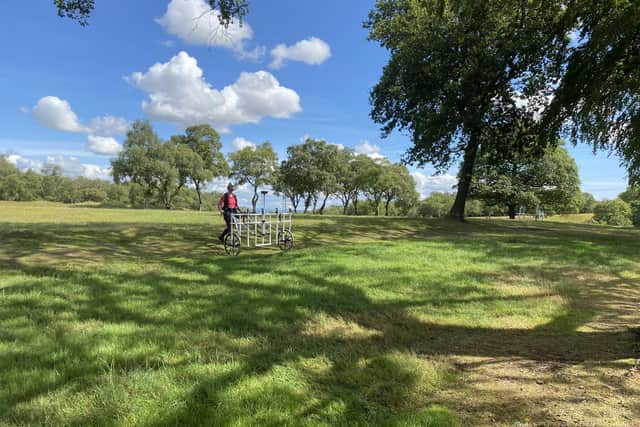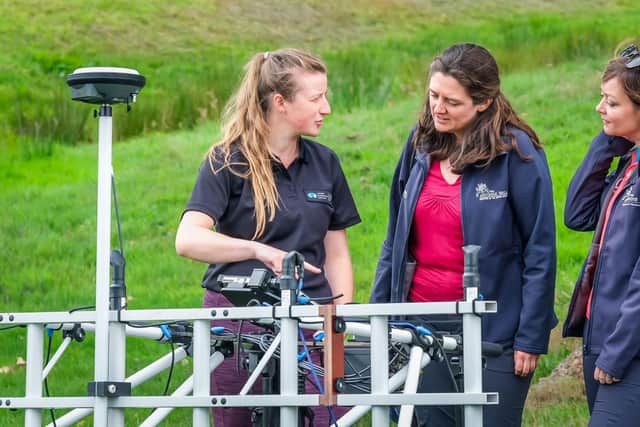Newly discovered fortlet found on Antonine Wall near Falkirk's Rough Castle fort
and live on Freeview channel 276
This latest discovery, to the west of the Rough Castle Fort, is the 11th fortlet to be found out of a possible 41 along the length of the wall, the frontier that the Romans constructed across central Scotland.
It was found as part of Historic Environment Scotland’s (HES) project, ‘Seeing Beneath the Ground: a Partnership for Geophysics’. The five-year initiative began in July 2020 and is funded by the Historic Scotland Foundation.
Advertisement
Hide AdAdvertisement
Hide AdIt has been suspected for some time that there may have been a fortlet to the west of Rough Castle, however its location had been unknown until now.


The survey team used gradiometry, a geophysical surveying technique, to look under the soil without the need for excavation and it identified the presence of the fortlet.
Dr Nick Hannon, geophysical survey officer with HES, said: “Based on the position of the other previously know fortlets in the area it was suspected there may be a fortlet somewhere to the west of Rough Castle fort, however its exact position or if any trace of it remained was unknown.
“The survey was able to identify the position of the fortlet’s ramparts, more specifically the rampart’s stone base some of which remains buried beneath the surface. The rampart was built of stacked turfs laid upon a stone foundation or base.”
Advertisement
Hide AdAdvertisement
Hide AdThe newly discovered fortlet would have been part of several fortlets along the Antonine Wall, one of Scotland’s six UNESCO World Heritage Sites. It would have been occupied by ten to 12 Roman soldiers who were stationed at a larger fort nearby, likely to be Rough Castle, and manned for a week at a time before being replaced by another detachment.


The fortlet would have been made up of two small wooden buildings to house the soldiers staying there and will have been used for the 20 years – from 142 CE to 162 CE – that the Antonine Wall was defended as the northernmost frontier of the Roman Empire.
The discovery of the Bonnyside fortlet comes after earlier this year the project team found a fortlet at Carleith Farm in West Dunbartonshire.
Dr Hannon added: “The discovery of an additional fortlet is important to our understanding of how the Antonine Wall was built and used. The way in which the monument was built and used is not fully understood so any additional information helps us to refine out understanding.”